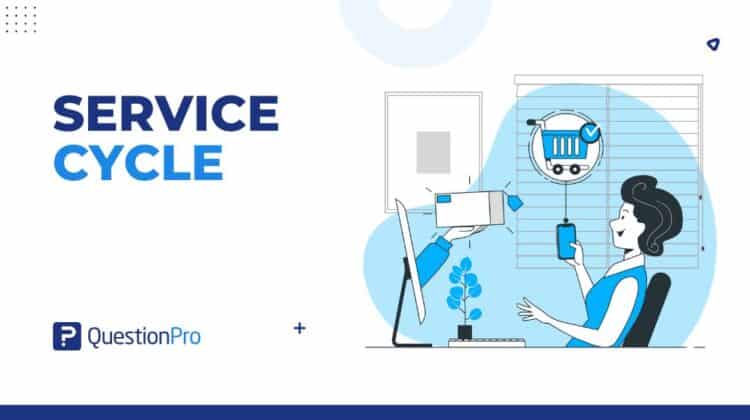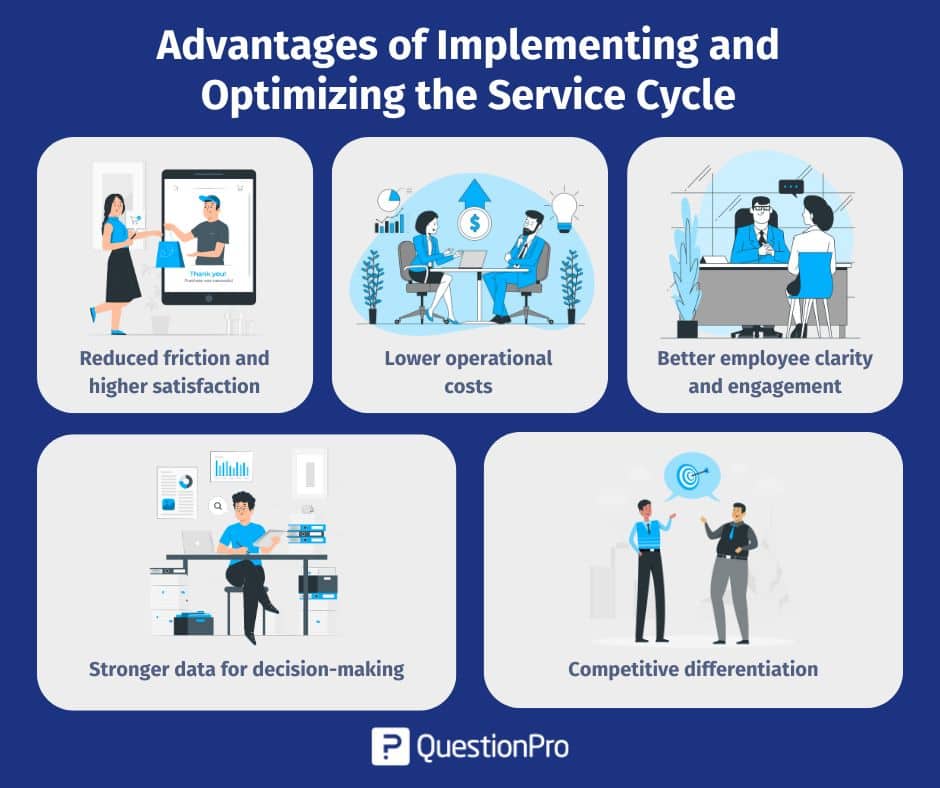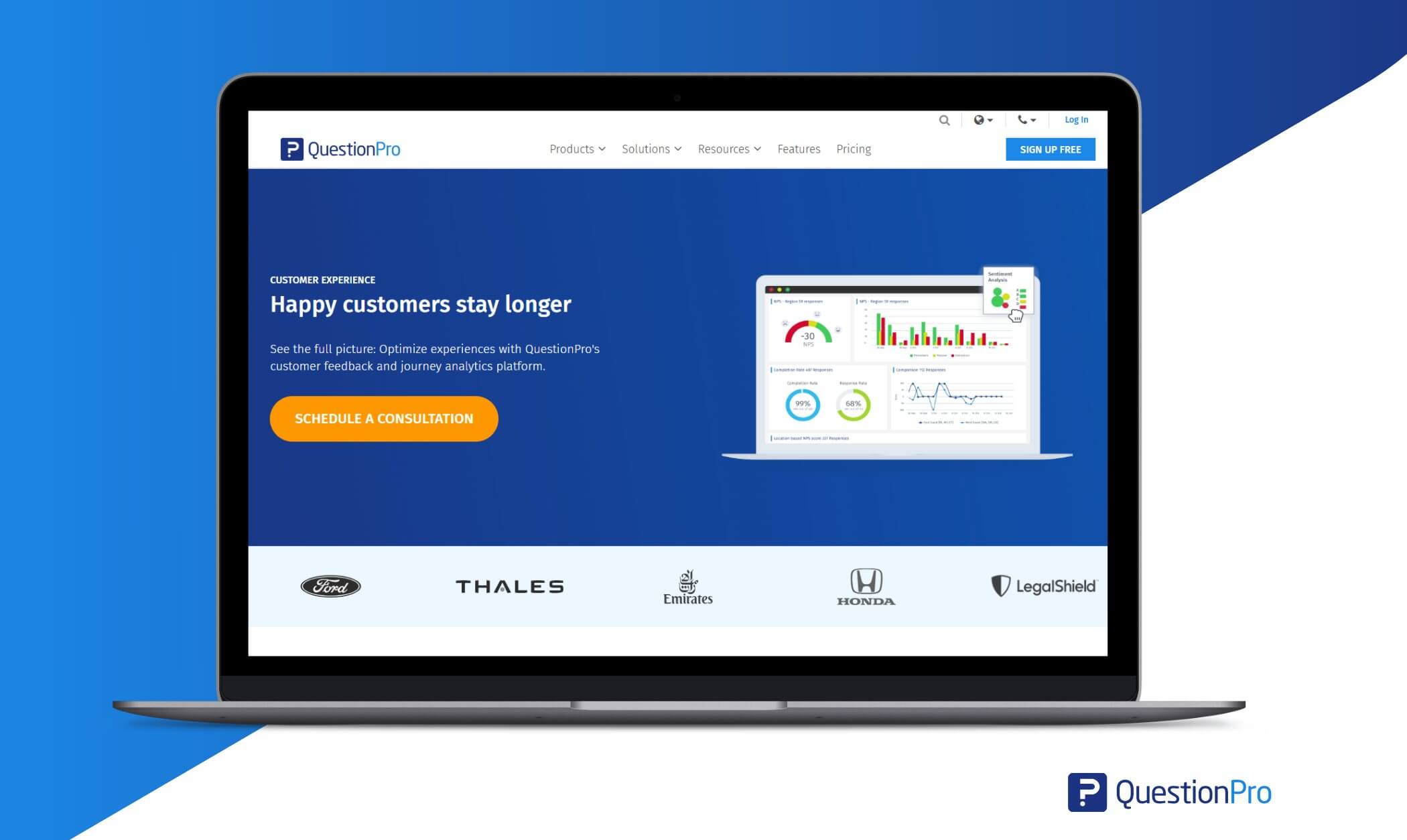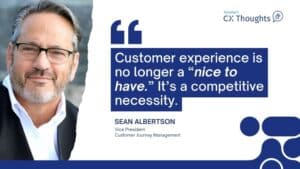
Every customer interaction tells a story about how well a company understands and supports its users. The service cycle helps explain why by showing how each interaction contributes to measuring and optimizing the customer experience from start to finish.
When companies look at the entire cycle rather than isolated moments, they can see where expectations are not met, which steps cause delays, and where minor improvements would have the greatest impact.
Improving this cycle helps companies create clearer, faster, and more reliable service across all touchpoints. This article explains how the service cycle works, how it compares to similar frameworks, and how organizations can map and optimize it using a step-by-step approach.
What is the Service Cycle?
The service cycle is the full path a customer follows when they use a service. It starts when they first feel a need, continues through all the steps to get help or a solution, and ends when the problem is solved and they share feedback. This cycle repeats every time the customer comes back, so it is not a one-time event but a continuous loop.
In this cycle, you look at both what the customer experiences and what happens behind the scenes to support that experience.
- From the customer side:
- What they see at each touchpoint.
- How they feel during the interaction.
- How smoothly the service moves from one step to the next.
- From the internal side:
- Tasks employees complete to support the service.
- Background systems that keep the process running.
- Approvals, updates, or workflows the customer never sees.
This combination helps companies understand the full picture and identify where improvements are needed.
Moment of Truth
Experts like Jan Carlzon describe each interaction as a “moment of truth” where the customer forms an opinion about the service. By mapping these moments, companies can see what works well and where the experience needs improvement.
Difference Between Service Cycle, Customer Journey, and Process Mapping
Although people often mix service cycle, customer journey, and process mapping, each describes something different. Understanding these three concepts is important because each one explains customer experience from a different angle.
1. The service cycle: The operational and holistic approach
This concept helps you understand how one specific service is delivered from start to finish.
- Focus: The practical chain of events needed to deliver a single service. It provides a 360-degree view of the service promise.
- Vision: Combines what the customer sees with the internal actions that enable the service.
- Scope: Applies to recurring services such as check-in processes, technical support cases, or delivery cycles.
2. The customer journey map: The empathetic and temporal approach
A customer journey map helps you understand how customers feel and think across their whole relationship with the brand.
- Focus: The emotional and psychological experience over time and across channels, highlighting expectations and pain points.
- Vision: From the customer’s point of view.
- Scope: Covers multiple service cycles and all stages from initial need to loyalty.
3. Process mapping: The internal and efficiency focus
This concept explains how internal operations work and how tasks move from one step to the next inside the company.
- Focus: The logical sequence of internal tasks that support a business goal.
- Vision: Strictly from the company’s perspective, focusing on efficiency, cost, and resource use.
- Scope: Covers internal processes such as billing, onboarding, or approvals.
Comparison Between Service Cycle, Customer Journey, and Process Mapping
A quick comparison helps show how these three frameworks differ in focus, perspective, and purpose. The chart below highlights the main distinctions so you can choose the right approach for your CX or operations goals.
| Aspect | Service cycle | Customer journey | Process mapping |
| Main focus | Delivery of one specific service | Full relationship and emotional experience | Internal workflows and tasks |
| Perspective | Mixed customer and internal view | Customer-only view | Company-only view |
| Scope | One recurring service cycle | Multiple stages and channels | Back-end processes |
| Primary goal | Improve service quality and consistency | Understand expectations and pain points | Improve efficiency and reduce errors |
| Typical use case | Analyze how a service is delivered | Design or refine the overall customer experience | Streamline internal operations |
Advantages of Implementing and Optimizing the Service Cycle
Improving the service cycle creates value for both customers and the organization by strengthening service quality, reducing friction, and supporting better decision-making.
When each step of the cycle is clear and well managed, the experience becomes easier to navigate and more reliable for customers.

- Reduced friction and higher satisfaction: Customers move through the service more smoothly, which supports trust and long-term loyalty.
- Lower operational costs: Removing unnecessary steps, improving handoffs, and reducing rework help teams operate more efficiently.
- Better employee clarity and engagement: Clearly defined roles and expectations help frontline staff work with confidence, which improves overall service performance.
- Stronger data for decision-making: Each touchpoint becomes a source of feedback and operational insight, enabling more accurate improvements.
- Competitive differentiation: A consistent, well-delivered service cycle is difficult for competitors to replicate, creating a source of advantage.
Studies on customer experience management show that organizations with structured service processes often achieve higher retention rates, better service quality, and lower service recovery costs than those without a defined cycle.
Characteristics of an Effective Service Cycle
A strong service cycle is designed to support both customer expectations and operational needs. It provides structure to every step of the experience while allowing flexibility when situations call for a personalized approach.
When these features are in place, the service becomes more predictable and easier to improve over time. Key characteristics include:
- Clear definition of each touchpoint: Every stage of the service is mapped so customers and teams know what to expect.
- Consistent handoffs across teams: Transitions between departments or channels feel smooth and coordinated.
- Measurable checkpoints: Metrics such as CSAT, NPS, and CES help track performance at each moment of truth.
- Standardized yet flexible workflows: Guidelines ensure consistency while allowing employees to adapt to individual customer needs.
- Regular updates based on feedback: The cycle is reviewed and adjusted frequently using customer insights and operational data.
These features help organizations deliver a reliable, seamless experience across digital platforms, in-person interactions, and support environments.
Steps to Map and Optimize the Service Cycle
Mapping and improving the service cycle helps organizations understand how a service works today and where changes can create better outcomes. A structured approach makes the process easier to analyze and ensures that improvements are based on real customer and operational data.
Step 1: Define the scope
Start by identifying the specific service you want to evaluate. Clarify which customer groups use it, since different segments may experience the cycle differently. A clear scope ensures that the mapping process stays focused and relevant.
Step 2: Map touchpoints and moments of truth
List every interaction involved in the service, from the initial need to the final follow-up. Group these interactions into key moments when customers evaluate service quality.
This method is supported by Jan Carlzon’s concept of moments of truth, which highlights how each interaction shapes the customer’s perception.
Step 3: Distinguish front-stage and back-stage work
Separate what the customer sees from the internal actions that enable the service. This includes tasks performed by employees and systems, such as:
- CRM platforms
- Knowledge bases
- Inventory tools
Understanding both sides provides a complete view of how the service functions.
Step 4: Measure performance
Assign metrics to each moment in the cycle. Use customer surveys, operational data, and Voice of the Customer insights to identify gaps between expectations and real outcomes. Measuring each stage helps pinpoint where improvements will have the most impact.
Step 5: Redesign and monitor
Address pain points by looking at where customers or employees struggle. When a step feels slow, confusing, or heavy, it is usually a good place to improve.
To support the redesign process, you can focus on:
- Updating or removing complicated steps.
- Using automation or AI to make tasks faster and more accurate.
- Training employees so they feel confident with the new process.
After making changes, keep an eye on feedback and performance data. Customer needs and systems change over time, so optimizing the service cycle should be a regular habit, not a one-time fix.
Uses of the Service Cycle to Improve Customer Experience
The service cycle gives companies a clear structure for improving how customers experience their services at every step. It connects what customers feel with how internal processes work, so both sides can be improved together.

- Strengthen the omnichannel experience
By mapping the service cycle across web, app, call center, and in-person channels, companies can check whether the experience feels connected and consistent wherever the customer interacts.
- Design and test new services
Before launching something new, teams can outline the service cycle, simulate each step, and spot problems early. This reduces surprises once real customers start using the service.
- Identify gaps between expectations and delivery
Comparing the ideal service cycle with actual performance helps reveal where customers feel delays, confusion, or broken promises.
- Improve support operations
Support teams can use the cycle to refine response flows, reduce repeat contacts, and make sure cases move smoothly from one step to the next.
- Train employees on standard procedures
The service cycle acts as a simple visual guide for training. It shows who does what, when, and how, so employees understand the whole picture, not just their part.
Overall, the service cycle helps align customer-facing actions with back-end processes, making each channel more consistent and easier to manage.
Tools to Optimize the Service Cycle
Several tools help organizations understand, measure, and improve the service cycle. Each one plays a different role, from capturing feedback to managing internal workflows.
1. CRM systems
CRM platforms keep all customer information and interaction history in one place. They help you:
- See each customer’s history quickly
- Keep conversations consistent across teams
- Avoid asking customers to repeat details
2. Journey, service, and experience mapping tools
These tools help visualize the entire service cycle. They make it easier to see every touchpoint, understand what customers experience, and identify what happens inside the company to support those steps. Teams often use them in workshops to align on improvements.
3. Customer feedback surveys
Surveys help organizations understand how customers feel about specific parts of the service cycle. They can be sent after support calls, onboarding sessions, deliveries, or any other key moment to capture satisfaction, effort, and suggestions for improvement.
4. Voice of the Customer platforms
VoC tools collect feedback at important moments in the service cycle. They allow organizations to:
- Send surveys at important steps in the cycle.
- Track KPIs such as CSAT, NPS, and CES.
- Get alerts when a customer has a bad experience.
- Close the loop by following up with those customers.
5. Analytics dashboards
Analytics tools and dashboards aggregate data from CRM systems, VoC platforms, and operational systems. They help teams:
- Monitor trends over time.
- Compare performance across channels or segments.
- Spot bottlenecks and recurring pain points.
Clear dashboards make it easier to decide where to focus improvement efforts.
6. Communication and ticketing systems
These systems organize customer requests and keep track of progress from start to finish. They record all related messages, assign responsibility to specific team members, and ensure that every case moves through the cycle without getting lost.
How QuestionPro Customer Experience Can Be the Ideal Choice for the Service Cycle
QuestionPro Customer Experience brings many important tools for the service cycle into one platform. Instead of jumping between different systems for surveys, dashboards, alerts, and follow-up, you can manage everything in one place and see the full picture of your customer experience.

- All customer feedback in one place
QuestionPro lets you collect feedback with CSAT, NPS, CES, and custom surveys at key moments of truth. All responses are stored in a single system, so you can quickly see how customers feel at different stages of the service cycle.
- Track every step of the service cycle
You can connect surveys and touchpoints along the service cycle to see where things work well and where customers struggle. This helps you understand how the experience flows from start to finish.
- Understand what really drives loyalty
Built-in dashboards and analytics help you see patterns in the data. You can identify which moments in the service cycle have the greatest impact on satisfaction, effort, and loyalty, and focus your improvements there.
- QuestionPro AI
QuestionPro AI can suggest questions based on your service cycle. It helps you cover clarity, relevance, tone, and engagement without missing important areas.
- Use one platform instead of many tools
Because feedback, analytics, alerts, and workflows live in the same place, teams get a clear and shared view of the service cycle. This makes it easier to manage, improve, and measure the customer experience over time.
Conclusion
The service cycle gives organizations a complete view of how customers experience a service from beginning to end. With the service cycle, you can map the cycle, measure performance, and act on feedback, gaining the clarity needed to reduce friction, improve consistency, and strengthen loyalty.
Using the right tools makes this process easier. When these tools work together, organizations can track what is happening at every moment, respond quickly to issues, and continuously refine the experience.
QuestionPro Customer Experience brings these capabilities into one platform. This unified approach makes it easier to monitor the service cycle, close gaps, and build a strong, consistent experience across every channel.
By treating the service cycle as a continuous loop rather than a one-time process, organizations create the foundation for long-term improvement and meaningful customer relationships.
Frequently Asked Questions (FAQs)
Answer: Because every time a customer uses the service again, they go through the same steps. Each new interaction builds on their last experience, so the cycle never really ends.
Answer: The customer journey examines the entire relationship with a brand over time. The service cycle focuses on one specific service and how it is delivered step by step.
Answer: Process mapping looks only at internal tasks and workflows to improve efficiency. The service cycle includes both internal work and the customer’s experience.
Answer: Start by picking one service, listing all touchpoints, grouping them into key moments, and adding simple metrics and feedback to each step.
Answer: Tools like CRM systems, mapping tools, Voice of the Customer platforms, surveys, dashboards, and ticketing systems help you map, measure, and improve the cycle.
Answer: It collects feedback at key moments, shows insights in dashboards, sends alerts when something goes wrong, and helps teams manage the whole service cycle in one platform.







